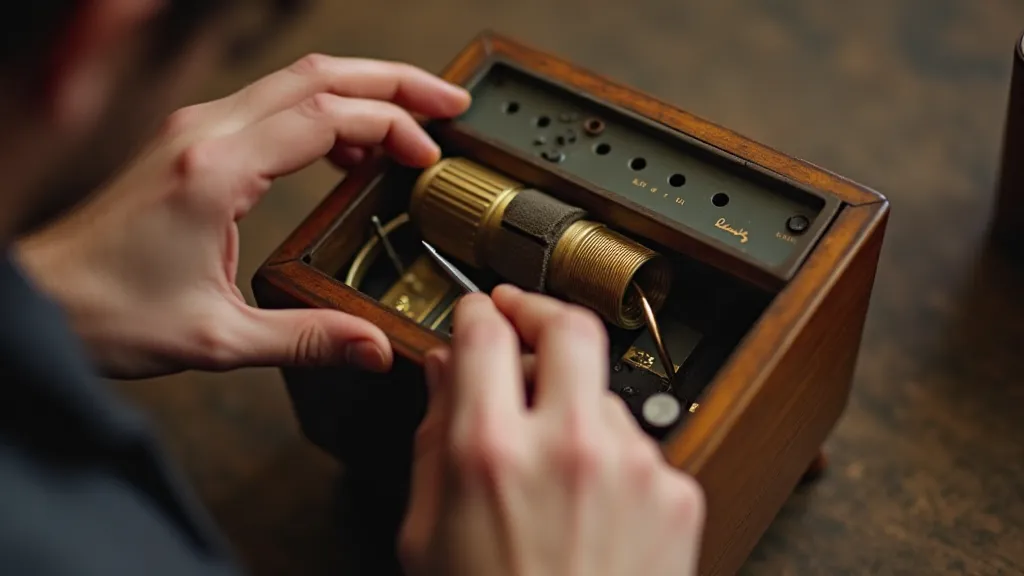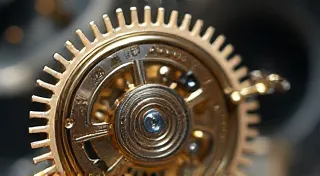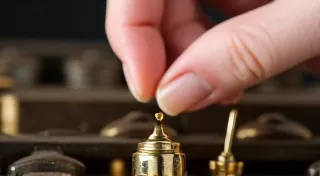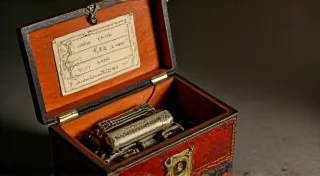Finding Replacement Parts for Your Vintage Music Box
Restoring a vintage musical box is a rewarding experience, but it often comes with the challenge of finding replacement parts. Whether it's a broken comb, a damaged cylinder, or a missing lever, sourcing these components can feel daunting. This guide explores the common parts that need replacing, where to find them, and considerations for each.
Understanding the Common Replacement Parts
Before you start your search, it's crucial to identify the specific parts needing replacement. Here’s a breakdown of the most frequently needed components:
- Combs: These are the heart of a musical box, responsible for producing the melody. They are typically made of steel, and the teeth are incredibly delicate. Damage often manifests as broken or bent teeth, leading to incorrect notes or no sound at all.
- Cylinders (or Discs): These rotating components have pins that activate the comb teeth to play the music. Cylinder damage can appear as bent pins, missing pins, or warping of the cylinder itself. Sometimes, a cylinder is simply stuck, and troubleshooting is required. You can find helpful information on repairing a stuck cylinder and other common issues.
- Levers & Pins: These smaller parts control the mechanism's function. Broken levers can halt the music playing entirely, while missing pins can lead to musical errors.
- Springs: Musical boxes rely on springs for power. Broken or weakened springs will result in the box either not winding correctly or producing a short, weak melody.
- Panels & Decorative Elements: While not critical for musical functionality, missing or damaged decorative panels significantly detract from the box's aesthetic appeal.
- Casing & Internal Brackets: These structural components can deteriorate over time. Missing or damaged brackets can impact the overall stability of the mechanism.
Where to Find Replacement Parts
Finding replacement parts is often the most challenging aspect of restoring a vintage music box. Here’s a breakdown of potential sourcing options:
1. Online Auction Sites (eBay, etc.)
Online auction sites are often a treasure trove for vintage musical box parts. You can find individual components, complete mechanisms, or even entire boxes being sold for parts. However, it requires patience and careful inspection of listings.
- Pros: Wide selection, potential for bargains.
- Cons: Condition can be variable, requires careful evaluation of seller feedback and photographs.
2. Specialized Musical Box Parts Suppliers
Several online suppliers specialize in musical box parts. These suppliers often offer a curated selection of parts, sometimes offering reproduction components, and often provide detailed information about compatibility.
- Pros: Reliable source, potential for accurate parts, often offer expert advice.
- Cons: Can be more expensive than auction sites, availability of specific parts may be limited.
Attending antique and collectible shows can be a fantastic opportunity to meet dealers who specialize in musical boxes and their parts. These shows allow for hands-on inspection and often provide opportunities to negotiate prices. You may also find individuals selling their personal collections of parts.
- Pros: Ability to inspect parts in person, potential for unique finds, chance to network with knowledgeable dealers.
- Cons: Requires travel, can be time-consuming, prices may vary.
The vintage music box community is surprisingly active online. Joining online forums and connecting with fellow enthusiasts can provide invaluable support, advice, and even opportunities to acquire parts. Someone might have a spare part they are willing to sell or trade.
- Pros: Access to a wealth of knowledge, possibility of acquiring hard-to-find parts.
- Cons: Relies on the generosity of others, may require active participation in online communities.
Considerations When Sourcing Parts
- Compatibility: Not all musical box parts are interchangeable. Ensure that any replacement part is compatible with the specific make and model of your box. Research the mechanism type (cylinder, disc, novelty) and any identifying marks on your box.
- Material: Original parts were often made of specific materials (e.g., high-quality steel for combs). Consider using materials that closely match the original to ensure optimal performance and longevity. Proper lubrication is also crucial; selecting the right oils can significantly extend the life of restored components.
- Condition: Carefully assess the condition of any replacement part before purchasing. Look for signs of damage, wear, or corrosion.
- Cost: Prices for replacement parts can vary widely. Set a budget and compare prices from different sources.
- Skill Level: Replacing musical box parts can be delicate work. Assess your skill level and consider seeking professional assistance if needed.
Sometimes, finding original replacement parts proves impossible. In these cases, reproduction parts may be an option. Reproduction parts are typically more readily available, but their quality can vary. Carefully research the reputation of the reproduction manufacturer before purchasing.
Ethical Considerations: When restoring a vintage music box, there's ongoing discussion regarding the ethical implications of using reproduction parts. Some purists argue that using reproduction parts diminishes the box's originality and historical value. Weigh these considerations based on your restoration goals.
Common Problems Beyond Parts Replacement
While finding replacement parts is a significant hurdle, restoring a vintage music box often involves tackling other issues. Winding problems, sticking movements, and tone irregularities are common challenges that require careful diagnosis and attention to detail. Recognizing these issues allows for a more comprehensive restoration plan.
Understanding Music Box Mechanisms
A key factor in finding the correct replacement parts lies in understanding the type of mechanism your music box employs. The three main types are cylinder, disc, and novelty mechanisms. Cylinder mechanisms are the most common, involving a rotating cylinder with pins that activate the comb. Disc mechanisms use a rotating disc with similar pin arrangements. Novelty mechanisms are more complex and often incorporate moving figures or other interactive elements, making parts sourcing even more challenging. Knowing the specific mechanism is paramount for accurate part identification.
The Importance of Documentation
Whenever possible, try to document your music box’s condition before disassembly. Take detailed photographs and make notes about the location of each part. This documentation will be invaluable when reassembling the mechanism, particularly if you’ve never worked on music boxes before. It's also a helpful resource for identifying missing parts during the sourcing process.
Long-Term Care and Maintenance
Once your vintage music box is restored, proper maintenance is essential for preserving its functionality and beauty. Regular cleaning with appropriate solvents, careful lubrication of moving parts, and avoiding exposure to extreme temperatures or humidity will help ensure its longevity. Periodically inspecting the mechanism for signs of wear or corrosion will also help catch potential problems early on, preventing more extensive repairs down the road.
Conclusion
Finding replacement parts for your vintage musical box can be a rewarding challenge. By understanding the types of parts needed, exploring various sourcing options, and carefully considering the compatibility and condition of those parts, you can significantly increase your chances of bringing your musical box back to its former glory. Remember to research and seek guidance from fellow enthusiasts when necessary – the vintage music box community is a valuable resource.






